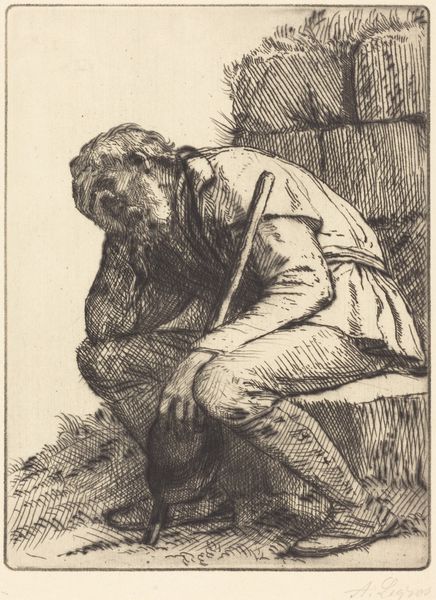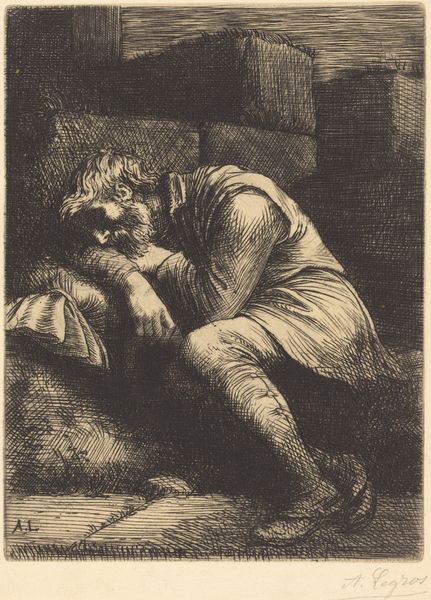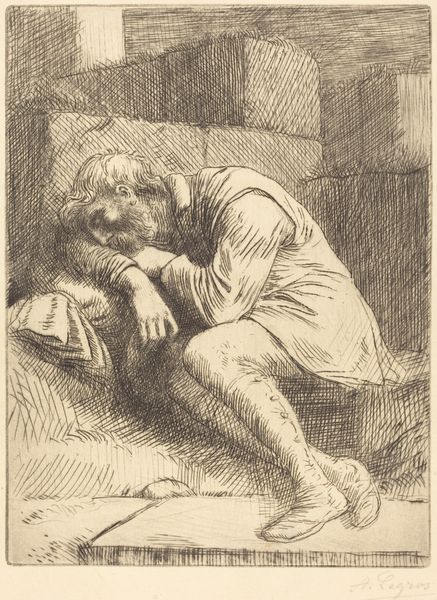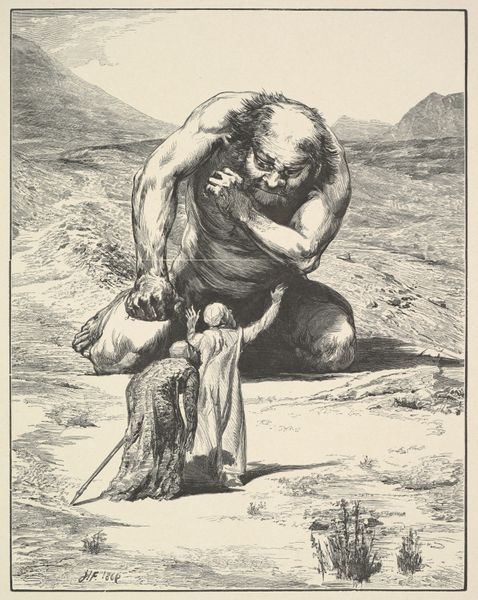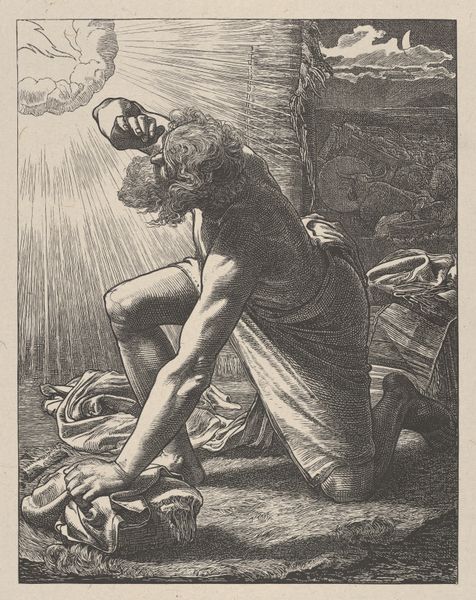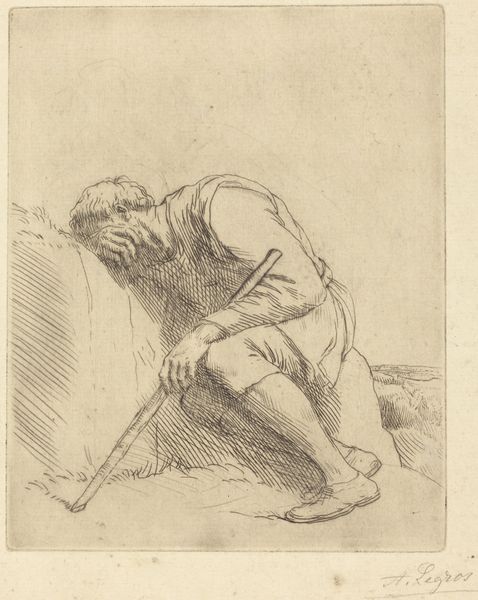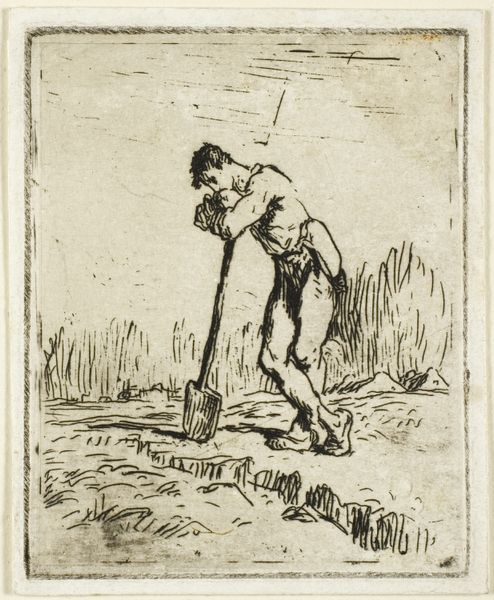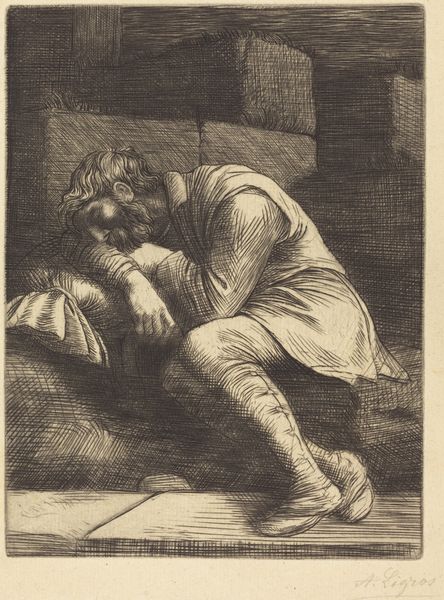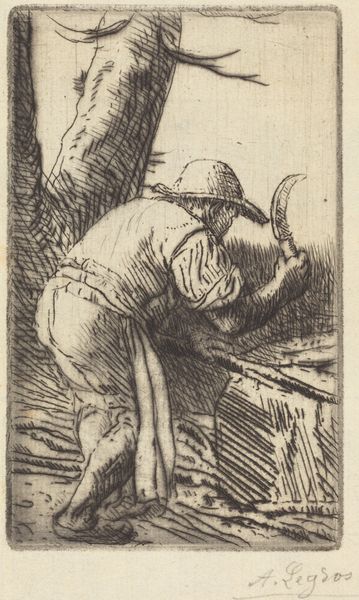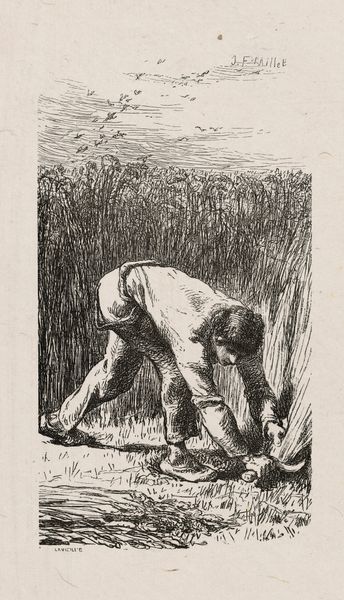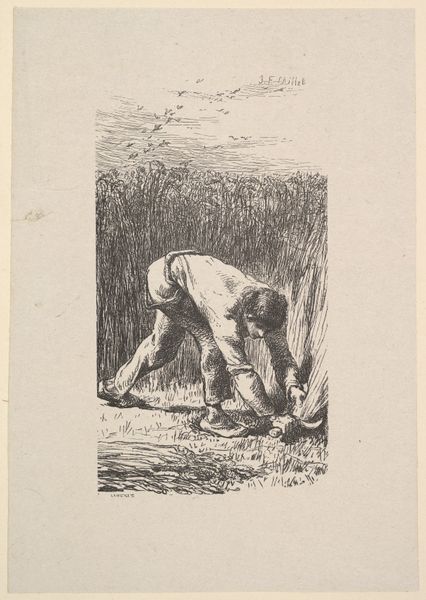
print, etching, engraving
#
portrait
#
narrative-art
# print
#
etching
#
landscape
#
figuration
#
pencil drawing
#
portrait drawing
#
engraving
#
realism
Copyright: National Gallery of Art: CC0 1.0
Alphonse Legros created this print, “Sinbad the Sailor,” using etching techniques. Legros was part of a new wave of etchers in France at the time, one that consciously revived etching as a fine art. This image of Sinbad isn’t one of heroic adventure but quiet dejection. We see him alone and exhausted, resting on the shore after his voyages. The image reflects a wider 19th-century interest in folklore and non-western tales, fueled by colonial expansion and the desire to categorize these cultures through art and literature. Yet, Legros presents Sinbad not as an exotic other, but as a universal figure of human suffering. Etchings like this gained popularity because they were far more accessible to a middle class eager to consume art. Through institutions like the Burlington Club, Legros helped raise the status of etching, moving it from a commercial craft to a respected art form. By studying the art market and exhibition records of the time, we can better understand how Legros positioned himself within the artistic landscape and the social function of his art.
Comments
No comments
Be the first to comment and join the conversation on the ultimate creative platform.
